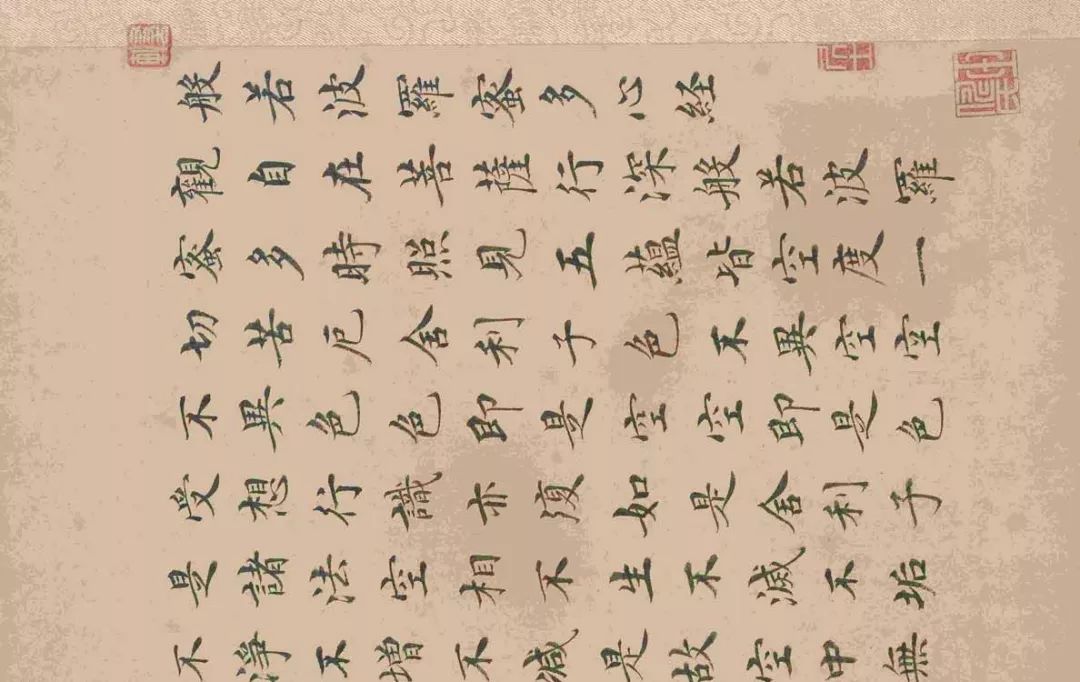
Shen Du's calligraphy is graceful and elegant, orderly and dignified, and is called "Wang Xizhi of my dynasty" by Ming Chengzu. Later, Emperor Renzong, Emperor Xuanzong, and Emperor Xiaozong praised Shen Du's calligraphy even more. It was the emperor's love and admiration that the officials who served in the Hanlin Academy at that time, as well as cabinet bureaucrats and scholars, followed his example. As soon as this wind opened, it became a pavilion.
Shen Du led the trend of calligraphy from Yongle to Hongzhi for more than a hundred years, until the rise of the "Wumen School", the Shen character gradually declined, but it did not completely withdraw from the historical stage, and there were Qing Dynasty pavilion styles and Zhuangyuan characters that were indiscriminately coveted by Shen Du. King Wenzhi of the Qing Dynasty commented on his book Yun: "The Shen family brothers are straight to the word wall, and the hairpin pen is not second to the favor." Duan Ya zhengyi book system, so far the pavilion has a special. ”
In 1406, Shen Duke Yantai Zhenru Temple, at the request of the old monk Yuan Juezhi, wrote the Heart Sutra after Li Longmian's "Teaching Map". This volume of Xiao Kai's "Heart Sutra", also known as Li Gonglin's "Wei Mo Jie Yan Teaching Chart", was written by Shen Du when he was 49 years old, with a graceful posture, Hu and Jian Jing, which is the best of Shen Du's Xiao Kai books.
Local enlargement, stunning!
▼
Shen Du was born in the seventeenth year of the Yuan Dynasty (1357) and died in the ninth year of Ming Xuande (1434). Zi Min Ze (民則), the name Zi Le, was a native of Huating (present-day Songjiang, Shanghai).
Shen Du was deeply appreciated by Zhu Di, the ancestor of Ming Cheng, for his proficiency in Taige calligraphy, and was praised by him as "Wang Xizhi of my dynasty", and his fame was very important. There are inkblots such as "Teaching Zhai Zhen" and "Four Proverbs" that have been handed down. The younger brother Shen Cang, good at practicing, cursive, sub-Shen Zao, good at Kai, all inherit the family learning. He is the author of "Western Qing Yu Self-Music Manuscript", "Self-Instruction Compilation", "Yunnan Draft", "Essay Record" and so on. The more famous calligraphy works include Li Longmian's "Wei Mo Yan Jiao Tu", Liu Songnian's "Dengying Tu", Liu Gonglin's "Guizhuang Tu" and the books "Do Not Abandon Yourself" and "Bao Ji Jing".
Shen Du has been fond of learning since childhood, is knowledgeable in the history of the classics, and is good at grass and writing books. At the beginning of Yongle, he ordered Hanlin to raise talents, promoted Hanlin classics, and successively moved to serve as a lecturer. Xuande Zhong, into hanlin bachelor. The Book of Degrees, graceful and ethereal, graceful and graceful, is called "Tai Ge Body". Chengzu was praised as "I Chao Xizhi", all gold and jade books, all big productions, and the book of destiny. For the text is bland, never to be frivolous. If you are sincere in what you do, you will be right. He is filial to his brother, and is called "Big and Small Bachelor" and "Cloud Ershen". Friendship with people, long-term respect. Be chaste and unattractive. He closed his house and burned incense, and Mingqin gave poetry to his own music, and the person was called "Mr. Zile". The demeanor is scattered, and the only good things are books, legal books, famous paintings, and ancient utensils, and the self-titled Zhaiju is called "Leqin Book". ”
Regarding his calligraphy, Ming Yang Shiqi's "Dongli Collection" says: "Good seal, li, true, xing, eight points of the book." Hongwu Zhongju was not literate, and Cheng Zu was promoted to Hanlin classic. For a time, Hanlin was good at writing, such as Xie Dasheng's truth, line, and grass, Hu Guang's trip and grass, Teng Yongheng's seal and eight points, Wang Ruyu and Liang's true deeds, and Yang Wenyu's trip, all of which were well-known in the world, and the books of Hu, Xie and Du were uniquely loved by the superiors. And said Shen Du's calligraphy, with "eight points especially high and ancient, full of Chinese meaning."